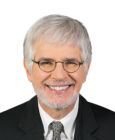Leadership
Peter Drucker on Living a Multidimensional Life
Strategies for the future of work.
Posted April 18, 2022 Reviewed by Devon Frye
Key points
- Peter Drucker’s concepts and life example can provide guidance for the great resignation, and the new/next normal.
- Develop multiple activities and pursuits, inside and outside the workplace.
- Meet, learn from, and interact with different people in diverse circles.

The world of work has changed immeasurably since the start of the pandemic two years ago. We are living in a period characterized by what’s become known as “The Great Resignation,” as well as a deluge of ideas about “the future of work,” and a search for the “new normal” or “next normal.” Besides resignations, there are also layoffs and firings. People will continue to be affected by organizations either going out of business or undergoing a merger, creating potential redundancies.
Throughout this upheaval, people continue to search for purpose, mission, and achievement of goals. In the wake of this dramatically changed landscape, what does it mean to live a rich, fulfilling, multidimensional life? For educator and management consultant Peter Drucker, part of the answer was what he called, during one of our interviews in 2005, "living in more than one world." My first book, Living in More Than One World: How Peter Drucker’s Wisdom Can Inspire and Transform Your Life, published in 2009, is built around this concept.
The secret is to have a number of activities and pursuits in your life and interact with multiple people in diverse spheres of activity. It also means not being over-invested in any particular area of life, inside and outside the workplace. This multidimensionality is the way he lived his generative life of 95 years, including a rewarding and varied career lasting more than 70 years. Drucker exemplified this concept in such areas as teaching, continuous learning, mentoring, reinvention, and personal reflection.
This focused thinking can work well if you are contemplating your own version of The Great Resignation. It can include self-questioning, such as asking yourself how portable your skills are, and what other types of organizations would value those skills. Perhaps your skills could be applied in different industries or even in working remotely for organizations in different cities or countries. As the virtual workplace becomes more entrenched, you are not necessarily as tied to one locale as you might have been before 2020.
A key aspect of this multidimensionality is knowing and understanding your current reality, so you can start to consciously build this type of life. Drucker described various reasons to live this way. If you have a setback in one area of life, you’ll have other areas to fall back on and from which to draw strength. What you learn in one pursuit you can apply in another. You meet, learn from, and interact with different people in diverse circles.
For instance, while continuing to consult for some of the world’s most important businesses, he maintained an active pro bono consulting practice, interacting with an astonishingly diverse set of people and organizations. He consulted with hospitals, museums, arts organizations, orchestras, Native American organizations, charities, and universities. He was an early advocate for business leaders learning from the leaders of nonprofit organizations. This was especially true in his seminal 1989 Harvard Business Review article “What Business Can Learn From Nonprofits,” which opens with a powerful statement: “The Girl Scouts, the Red Cross, the pastoral churches—are becoming America’s management leaders.”
Another facet of multidimensionality is developing parallel and additional careers. For Drucker, this meant teaching, writing, and consulting. Each was related, but they were still separate pursuits that could be performed nearly contemporaneously. In his career changes, he worked in banking and finance as a young man in his native Europe. He decided that his values revolved more around people than money, and moved into journalism. Later, while not giving up the latter, and also becoming an author, he took up teaching and consulting.
In Management: Revised Edition, published in 2008, three years after his death, Drucker describes the benefits of multidimensionality beyond the workplace: “Knowledge workers therefore need to develop, preferably while they are still young, a noncompetitive life and community of their own, and some serious outside interest—be it working as a volunteer in the community, playing in the local orchestra, or taking an active part in a small town’s local government. This outside interest will give them the opportunity for personal contribution and achievement.”
As busy and devoted to his work as he was, Drucker had a vibrant life beyond his career. He was married for 68 years, with four children and six grandchildren to the remarkably accomplished inventor/entrepreneur/writer Doris Drucker, who lived to be 103. As busy as he was with his multi-pronged career, he took time for his family and friends and was a champion networker long before the social media era. He was a voracious reader and learner, collected and taught about Japanese art, listened avidly to classical music, and occasionally wrote about it.
In the short term, we can’t predict the full effects of The Great Resignation or any of its spinoffs. But significant changes to life and work can seem less daunting if we strive for multidimensionality, and follow Peter Drucker’s example to live in more than one world.
References
Doris Drucker: Invent Radium or I'll Pull Your Hair: A Memoir (University of Chicago Press, 2004)
Peter F. Drucker: Classic Drucker: Wisdom from Peter Drucker from the Pages of Harvard Business Review (Harvard Business Review Press, 2006)
Peter F. Drucker (with Joseph A. Maciariello): Management: Revised Edition (Harper Business, 2008)
Bruce Rosenstein: Living in More Than One World: How Peter Drucker's Wisdom Can Inspire and Transform Your Life (Berrett-Koehler, 2009)
Rick Wartzman, with Photos by Anne Fishbein, Curated by Bridget Lawlor: Drucker: A Life in Pictures (McGraw-Hill, 2013)




